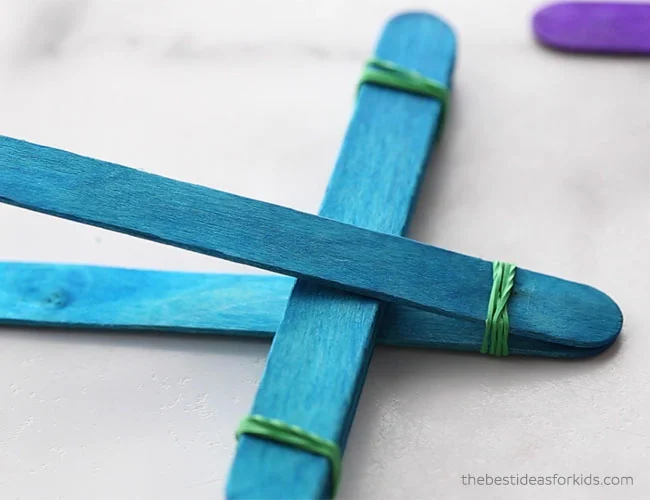Catapult With Popsicle Sticks
In this lesson, children will build and test their own catapults.
Learning Goals:
This lesson will help children meet the following educational standards:
- Demonstrate curiosity about the world and begin to use the practices of science and engineering to answer questions and solve problems
- Explore concepts and information about the physical, earth and life sciences
- Understand important connections and concepts in science and engineering
Learning Targets:
After this lesson, children should be more proficient at:
- Developing beginning skills in the use of science and engineering practices such as observing, asking questions, solving problems, and drawing conclusions
- Identifying, describing and comparing the physical properties of objects
- Exploring the effect of force on objects in and outside of the early childhood environment
- Understanding rules to follow when investigating and exploring
- Using nonstandard and standard scientific tools for investigation
Step 1: Gather materials.
- The book, Fraydo the Dragon: A Very Big Problem!, by Courtney Spain Aragon
- Paper
- Plastic spoons
- Popsicle sticks
- Puff balls or pom-poms
- Rubber bands
Step 2: Introduce activity.
- Read the book: Fraydo the Dragon: A Very Big Problem!
- Watch the video tutorial, "How To Make Popsicle-Stick Catapults" with the children.
- Demonstrate how to build a catapult:
- Make a stack of 6 popsicle sticks and put a rubber band on each end to hold the stack together.
- Stack 2 more popsicle sticks, put a rubber band on one end and open the other end to form a V.
- Slide the larger stack of popsicle sticks in between the 2 sticks so that they stay open. (See top photo below for reference.)
- Now slide the spoon under the rubber bands on the top popsicle stick. (See bottom photo below for reference.)
- Say: "Now it's time to make your own catapults!


Step 3: Engage children in lesson activities.
- Now lead the children through the steps again as they build their own catapults.
- Once the catapults have been built, say: "Put your puff balls or pom-poms on your spoons and see if you can launch them. Push your spoons down towards the ground and let go!"
- Now ask: "What can you change to make your puff balls or pom-poms fly farther?
- Extend the lesson by measuring the distance that the children's puffs or pom-poms have traveled.
Step 4: Engineering vocabulary
- Catapult: A type of simple machine called a lever
- Create: To make something
- Improve: To make changes to create a better design
- Test: To try out an idea to see if it works or not
Suggested Books
- 3, 2, 1, Go! by Emily Arnold McCully
- Caleb the Catapult vs. The Train Monster by Caleb Spencer
- Cat Catapults by Izzy B.
Music and Movement
Outdoor Connections
Web Resources
- Try making this Popsicle Stick Catapult.
Comment on this lesson.